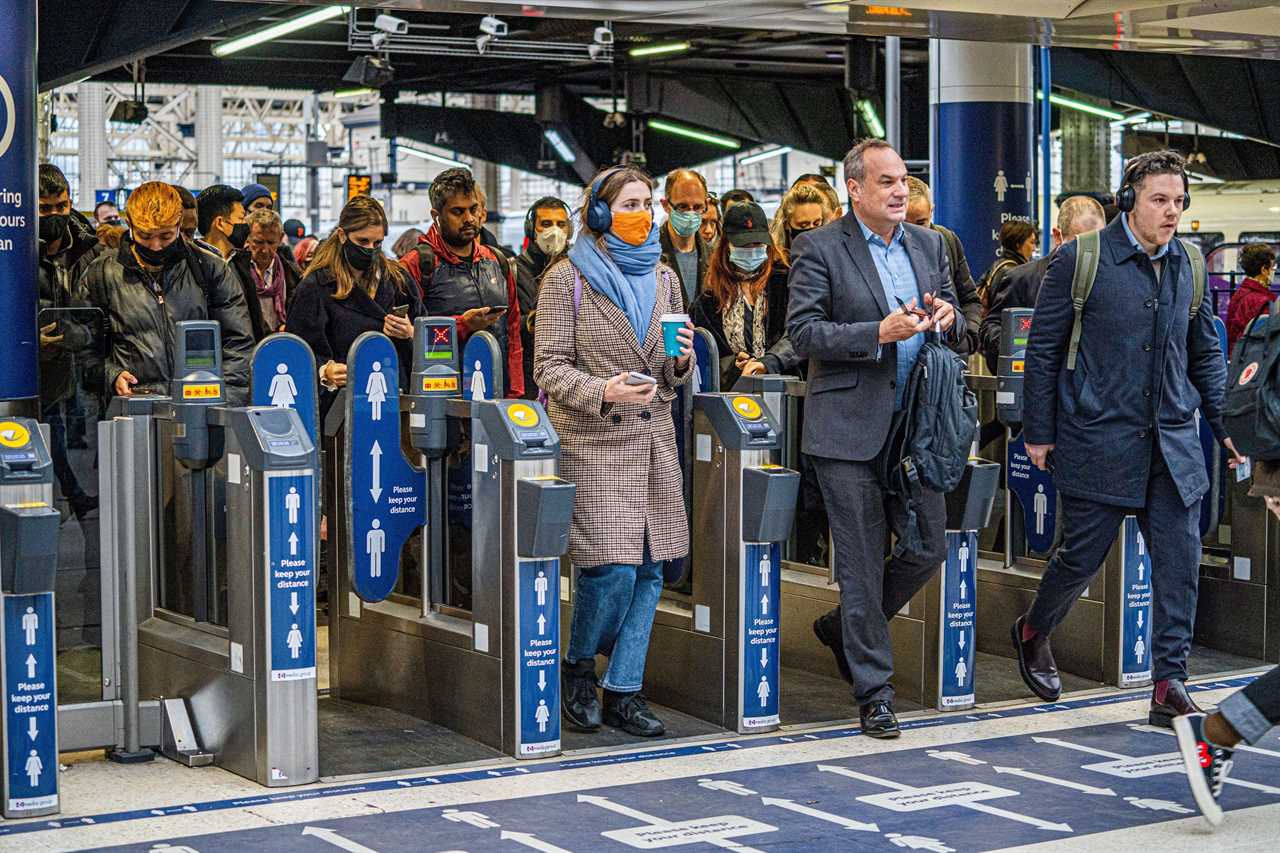THE UK’s crucial coronavirus R rate could be as high as 1.2 as the country battles with rising infections.
Its comes after weeks of the rate hovering between 0.9 and 1.1 as Brits continue to live with no restrictions.

Infections have been climbing and the most recent daily cases show that more than 50,000 people are reporting positive tests each day.
Fears have been circulating that so-called ‘Plan-B’ measures could be implemented if infections can’t be pushed down.
These measures would include a return to working from home and mandatory mask wearing.
It was revealed yesterday that several local councils had already been told that they would receive extra support in the form of more testing and a push for vaccines as cases continue to rise in hotspots.
But so-called ‘Plan C’ measures are also being discussed by ministers which could include families being banned from mixing with other households.
The current R rate sits between 1 and 1.2, which means that on average every 10 people infected will go on to infect a further 10 to 12 people.
The growth rate is currently also between one and three per cent, meaning that the number of new infections is growing by one and three per cent every day.
The UK’s Health Security Agency (UKHSA) has halted the publication of a regional R rate after a testing issue which meant that thousands of people had ‘false negative’ PCR tests.
The impact of this is being felt across the South West, South East and London.
A new cluster of infections is currently being witnessed across Gloucestershire because of the gaff and public health officials there have said that the rate is only expected to continue to climb.
While the R rate has crept up, infection data shows that prevalence in the community is currently at its highest level since January.
At present it’s estimated that one in 55 people currently have Covid-19 in the UK, the Office for National Statistics (ONS) states.
Prevalence of infections has risen for a fourth straight week, having been at 1 in 60 people in the previous week.
The ONS estimate prevalence is at its highest since the week ending Jan. 23.
This was shortly after England entered its third national lockdown.
Since then vaccines have been rolled out across the country and have played a part in preventing people from becoming seriously ill with the virus.






